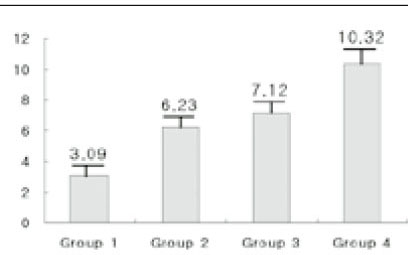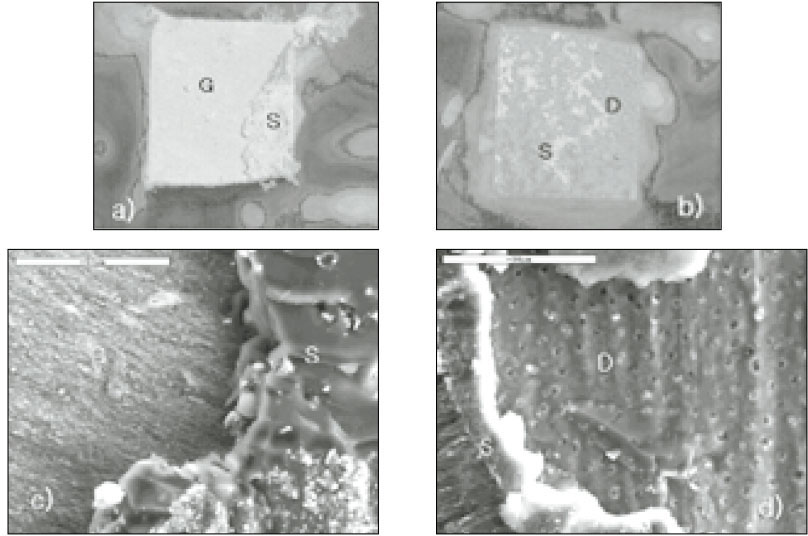Measurement of adhesion of root canal sealer to dentine and gutta-percha
Article information
Abstract
The purpose of this study was to investigate the bonding of resin-based root canal sealer, AH26 when the sealer was applied as a thin layer between dentine and gutta-percha surface.
In this study, forty non-caries extracted human molars and resin-based root canal sealer(AH 26, DeTrey/Dentsply, Germany) were used. Disks of gutta-percha, 6mm in diameter·6mm thick (Diadent/Dentsply, Korea) for thermoplastic obturation were used and dentin surfaces were treated with 2% NaOCl(Group 1) or 2%NaOCl+17% EDTA(Group 3). Disks of gutta-percha, 6mm in diameter·6mm thick (Diadent/Dentsply, Korea) for conventional obturation were used and dentin surface were treated with 2% NaOCl(Group 2) or 2%NaOCl+17% EDTA(Group 4). Enamel was removed by a horizontal section 1mm below the deepest portion of the central occlusal groove by using a water-cooled low speed diamond saw. A second horizontal section was done around cementoenamel junction. Exposed dentin surface was cut to approximately 8×8 mm rectangular shape and was ground against 320, 400, 600 grade silicon carbide abrasive paper serially. After grinding, the dentine surface were soaked in a solution of 2% NaOCl for 30 minutes and twenty of specimens were treated with 17% EDTA solution for 1 minute. The treated specimens were washed and dried. Root canal sealer, AH26 was prepared according to the manufacture's instructions. The Gutta-percha and dentin surface were coated with a thin layer of the freshly mixed sealer. The specimens were left overnight at room temperature. After their initial set, they were transferred to an incubator at 37℃ for 72 h. After 72 hours, resin blocks were made. The resin block was serially sectioned vertically into stick of 1·1mm. Twenty sticks were prepared from each group.
After that, tensile bond strength for each stick was measured with Microtensile Tester. Failure patterns of the specimens at the interface between gutta-percha and dentin were observed under the SEM(×1000) and Stereomicroscope (LEICA M420, Meyer Inst., TX U.S.A) at 1.25 ×25 magnification. The results were statistically analysed by using a One-way ANOVA and Tukey's test.
The results were as follows;
1. Tensile bond strengths(mean±SD) were expressed with ascending order as follows: Group 1, 3.09±1.05MPa ; Group 2, 6.23±1.16MPa ; Group 3, 7.12±1.07MPa ; Group 4, 10.32±2.06MPa.
2. Tensile bond strengths of the group 2 and 4 used disks of gutta-percha for conventional obturation were significantly higher than that of the group 1 and 3 used for thermoplastic obturation. (p < 0.05)
3. Tensile bond strengths of the group 3 and 4 treated with 2% NaOCl+17% EDTA were significantly higher than that of the group 1 and 2 treated with 2% NaOCl. (p < 0.05)
4. In analysis of failure patterns at the interface between sealer and gutta-percha, there were observed 49 (61%)cases of adhesive failure patterns and 31(39%) cases of mixed failures patterns.














